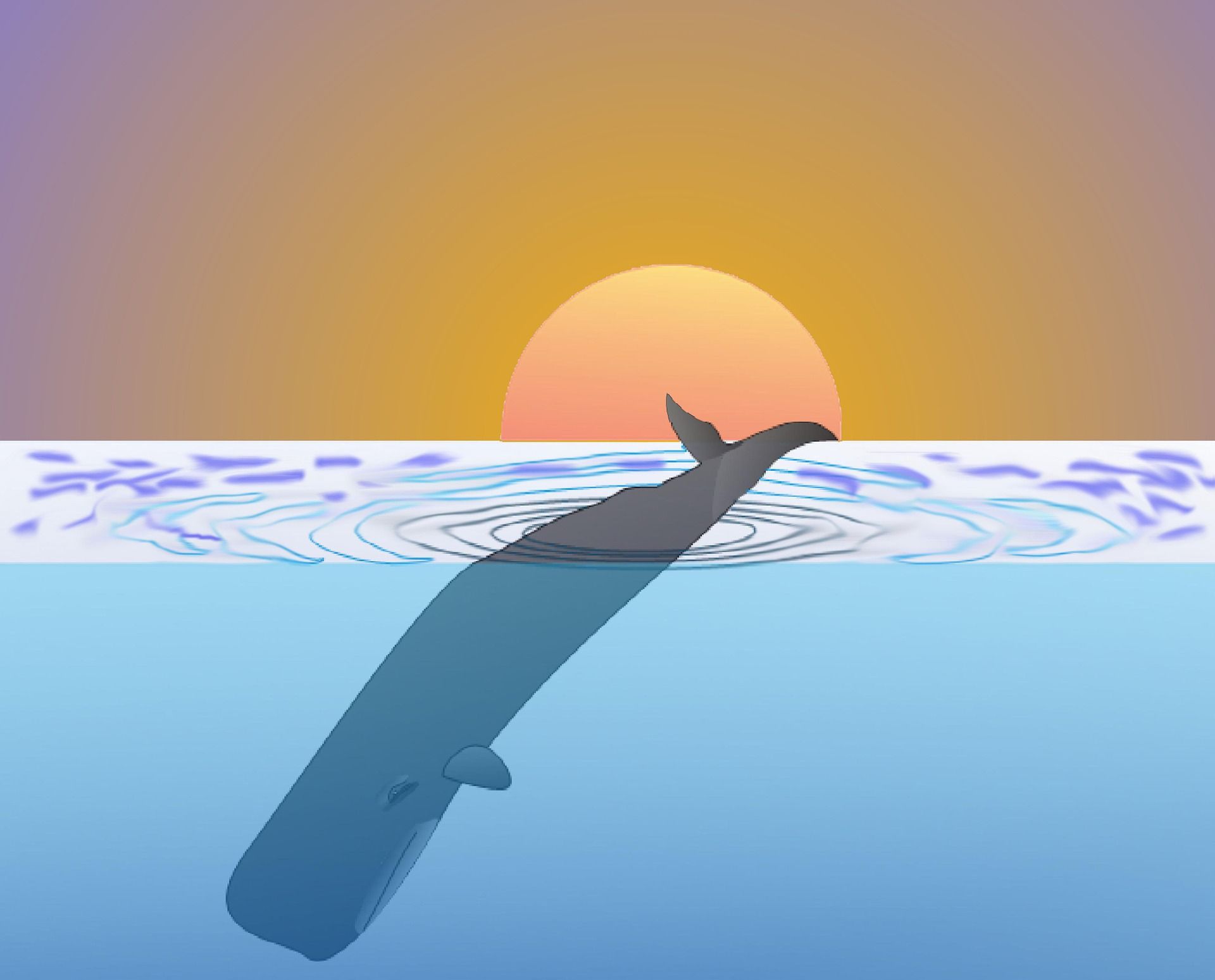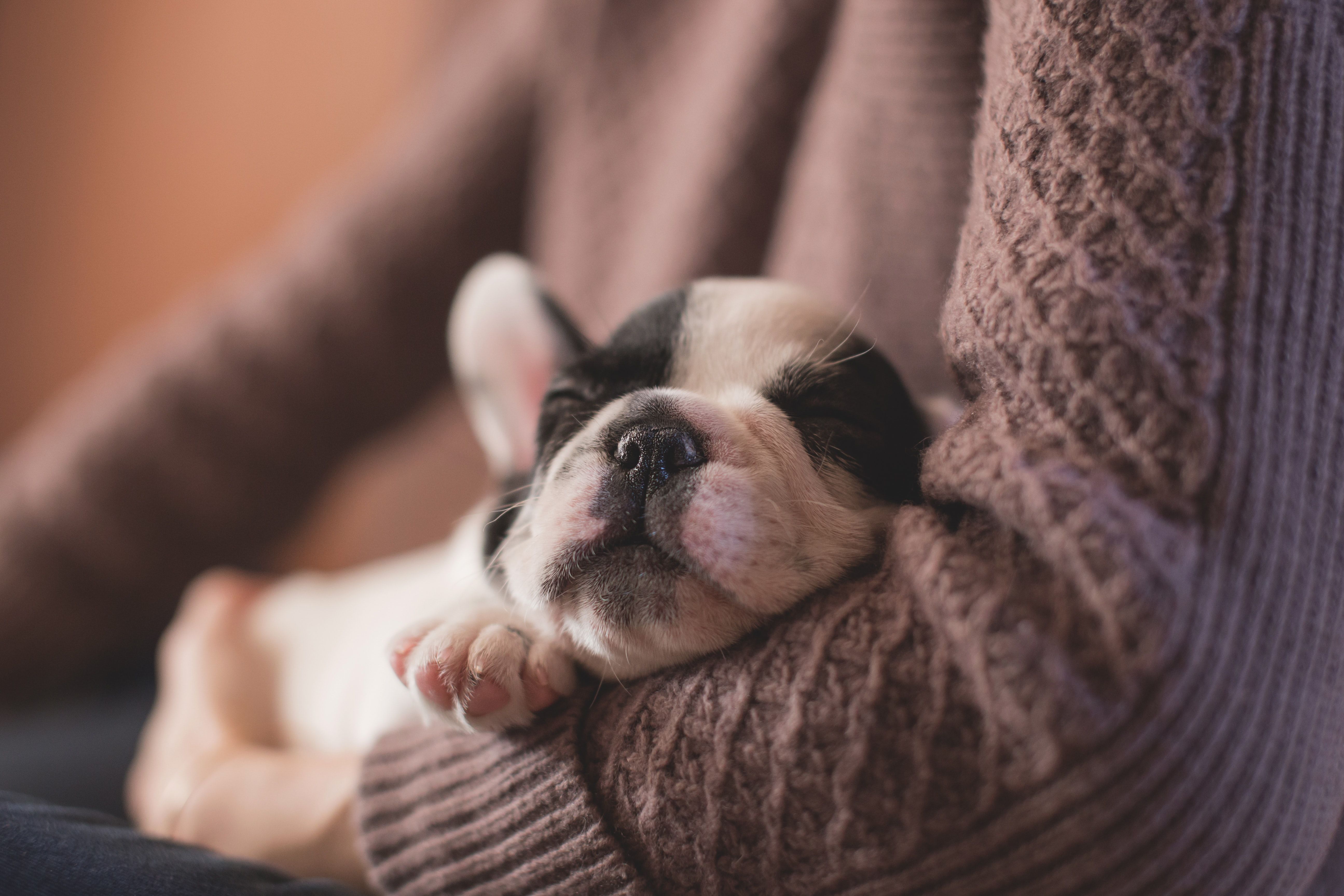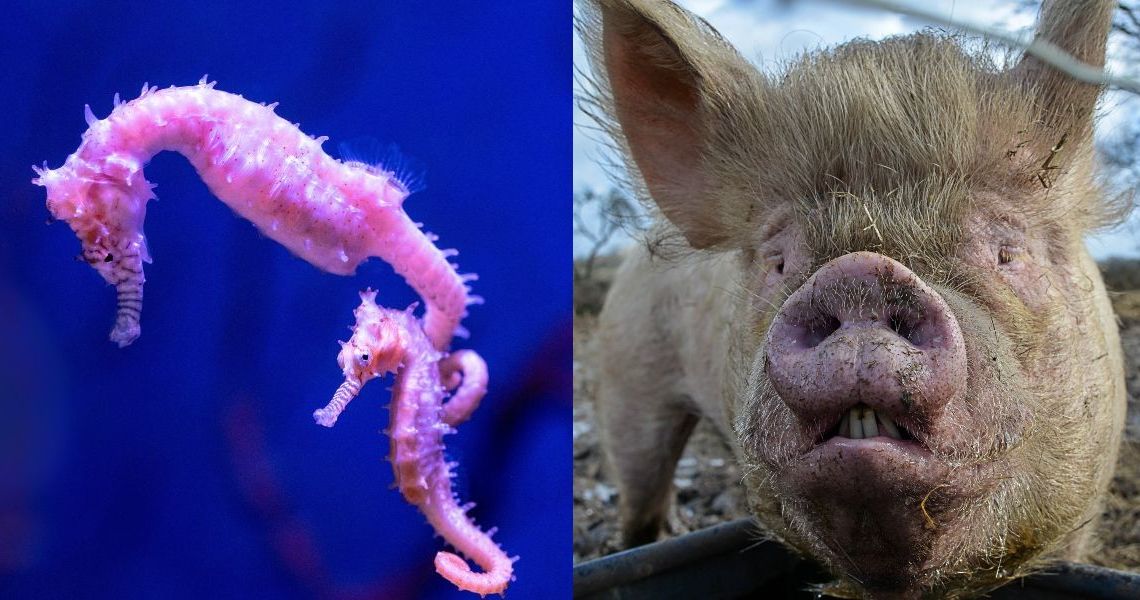Animals are such amazing creatures. There are more than 7.7 million different types of species on Earth, with many more still waiting to be discovered.
While we know why dogs exhibit odd behaviors (by human standards at least), it's impossible to know everything about all of the animals in the world. Luckily, scientists have uncovered fascinating tidbits of information about a few of the most well-known creatures that blow us out of the water.
Interested to know about these intriguing attitudes and traits? Well, buckle your seat belt, because here are 40 of the most shocking facts about your favorite creatures in the animal kingdom.
1. Sperm whales sleep vertically

In 2008, scientists discovered sperm whales sleep vertically, but only drift off for about 7% of their day. While it was believed this breed of whale were unihemispheric sleepers (where half of their brain is still awake but the other is not), these creatures didn't come out of their slumber until they were hit with a small boat.
2. Dogs can dream

Their dreams are less complex than ours, as they envision typical dog-related activities, like chasing birds and burglars.
3. Elephants are pregnant for 95 weeks
As the largest land animal in the world, elephants have a unique cycle of ovulation that allows them to create more of the temporary glands that monitor hormone levels during their pregnancy. Their calves are usually born at around 200 lbs with advanced brain development.
4. Butterflies use their feet to taste
Butterflies have sensors on their legs that allow them to taste their next meal by just standing on their food. Since they don't have mouths like other insects, they cannot chew their food and must slurp the juices and saps off of fruits from their proboscis (a long straw-like structure that is found on their head)
5. Prairie dogs greet one another by kissing on the mouth
While it might look like a sweet smooch on the outside, prairie dogs lock teeth with one another to determine if they're in the same social group.
6. A cockroach can live up to nine days without its head
After that time, they inevitably die of hunger.
7. A snail can sleep for three years
Like many other creatures in the animal kingdom, some snails are known to hibernate in the cold. However, based on the snail's location, the climate could take months if not years to warm up again. They bury themselves into the ground and use their own slime to close off their shell.
8. Camels, polar bears, and seals all have three eyelids
These animals have three eyelids to protect their eyes from the elements. For instance, camels use it to protect their vision from the sand, polar bears have an extra eyelid to reduce the chances of acquiring snow blindness and seals have them to keep their eyes moist.
9. An ostrich's eye is larger than its brain
An ostrich's eye is typically the size of a billard ball, while their brain is no bigger than a hen egg.
10. It's illegal to own a single Guinea pig in Switzerland
They're social creatures and will suffer immensely without companionship, so you can only own two pigs, not one.
11. Koalas have human-like fingerprints
Even though humans and koalas have strikingly similar fingerprints (that an ordinary microscope can't tell apart), they haven't shared a common ancestor for more than 70 million years. While scientists have long debated what their fingerprints are meant for, it's believed they're an evolutionary adaptation to make it easy for them to grip things, such as leaves on trees.
12. Cats are allergic to humans
Our furry friends are specifically allergic to the chemicals in our skin.
13. Penguin urine accounts for up to 3% of the ice in Antarctic glaciers
This makes sense because there are roughly around 12 million penguins on the continent.
14. Cats headbutt people who make them feel safe
Cats have sweat glands all over their bodies, so when one bumps their heads against you, they leave their scent in an effort to mark their territory. They're letting you know that they trust you and that you make them feel comfortable and safe.
15. A shrimp's heart is located in its head
Their other major organs, such as their brain, stomach, ovaries and testicles are located in their head as too.
16. Manatees' nipples are by their armpits
Manatees have a nipple under each of their flippers, where their young will suckle on up to the first two years of their lives. These parent-child pairs are often seen slowly moving along in the ocean in this position as the mother searches for food.
17. Wombat has cube-shaped feces
Wombats leave their feces on top of rocks and logs to mark their territory. They're shaped in cubes to prevent the poop from rolling away from their allocated location.
18. Chickens can undergo natural sex changes
If a hen suffers from an ovary malfunction it can transition into a rooster as its male hormones will take over.
19. Capuchin monkeys urinate on their hands to wash their feet
While it's not the most sanitary practice by human standards, male capuchin monkeys bathe themselves in urine to attract the attention of the opposite sex, and then engage in intercourse.
20. Male catfish hold eggs inside their mouth until they hatch
Since male catfish carry the eggs in their mouths, they must fast during that time period so their offspring won't fall out.
21. Honeybees can get sexually transmitted diseases
Like plenty of other animals, honeybees are polygamists, and the queen can have hundreds of male partners in only a few hours.
22. Flamingos are naturally white
While flamingos are famous pink coloring, they only turn that shade from their diet of brine shrimp and algae.
23. Cows have best friends
In an experiment, cows in three different situations, first by themselves, with their best friend, and then with another cow they didn't know. When they were paired with their best friend, it was revealed the cow had a lower heart rate and less stress. Another study proved cows are more perform better when they're living with a buddy as opposed to being alone.
24. Bats give birth upside down
Despite giving birth to their pups upside down, bats make catch their offspring in their wings when they finally pop out. The baby bats (who are born at about 40% of the size of their mothers) are typically born feet first so their wings don't become entangled.
25. Turtles breathe from their bums
Even though turtles have a mouth and barbels (bumps under their chin that allow them to pick up scents) some still prefer to breathe out of their bums. When a sea turtle goes into hibernation, they must alter how their body functions to survive. Since they're submerged in cold water up to five months, it's more energy efficient for them to breathe out of their bums than using their lungs and muscle-set functions.
26. Killing a panda can result in the death penalty
Although giant pandas have been known to be China's national symbol, they were still on the endangered species list until 2016. Due to the significant decrease in the panda population since the 60s, the Chinese government decided to make hunting pandas an illegal practice.
The amendment to the Constitution that stated "smugglers of giant pandas shall have a punishment of at least a 10-year sentence and confiscation of property; under grave circumstances, life sentence or even death sentence together with a total confiscation of property shall be applied."
27. All clownfish are male
While all clownfish are born male, half of the population eventually transform into females for reproduction purposes.
28. Owls don't have eyeballs, they have eye tubes
Even though owls have good eyesight, it doesn't come from a pair of eyeballs. Instead, these birds have eye tubes, which prevents them from turning their sockets. Alternatively, they can turn their necks 270 degrees.
29. Cats don't meow to communicate with their fellow felines, but rather to get a human's attention
While kittens meow at their mother, when they grow up, they use other methods to communicate with each other, such as facial expressions, body language, scent, and touch. Through evolution, cats have learned they can catch a human's attention by simply meowing at them.
30. Otters hold paws when they sleep
Since otters float together in groups you'll often see them holding hands with one another so they don't drift apart while they're in slumber. If an otter is too small to hold someone else's hand, they will lay on their mother's stomach.
31. Before a chick hatches, it can communicate to its mother and peeps through a series of sounds
It's been reported chickens have about 30 different sounds that can be distinguished by the human ear, which starts when the chicks are still inside their egg.
32. Seahorses mate for life, holding each other's tails when they swim together
Seahorses are monogamous creatures who mate for life. During their courtship, they dance together, change colors and hold each other's tails.
33. Like humans, goats can speak with accents
As it turns out, humans aren't the only ones who can have accents in their speech. In 2012, a group of researchers realized pygmy goats had different accents entirely based on the social circle they were apart of.
34. A pig's orgasm can last up to 30 minutes
However, a 2012 study of "high-performance boars" found that a male pig's ejaculation lasted an average of six minutes.
35. Elephants are known for their empathy
They're one of the few species that are known to mourn their loved ones, even including those of different species.
36. When a kangaroo is born, they're only about an inch long
When a kangaroo gives birth to her joey, the newborn is severely underdeveloped. Unlike most mammals, kangaroos don't have a placenta, leaving the baby to live in its mother's pouch for about eight to 11 months.
37. Humans share 70% of their DNA with slugs
It may sound like a huge percentage, but humans and slugs shared a common ancestor about half a billion years ago. Since we have 14,000 genes it shouldn't be surprising we share some with other lifeforms on earth.
38. Rodents' teeth never stop growing
Similar to how a human's nose and ears will never stop growing, neither will a rodent's teeth. They need their pearly whites to be constantly growing as they become worn down from gnawing at the bark, nuts, and other hard vegetables.
40. A hippo's sweat is reddish-pink
If you've ever wondered why hippos are always seen with patches on their skin, it's not because of a change in their pigmentation. Hippos produce a reddish-pink sweat that acts as a natural sunscreen and helps accelerate the recovery of their wounds since they are always out in the sun.
What is your favorite animal fact?
